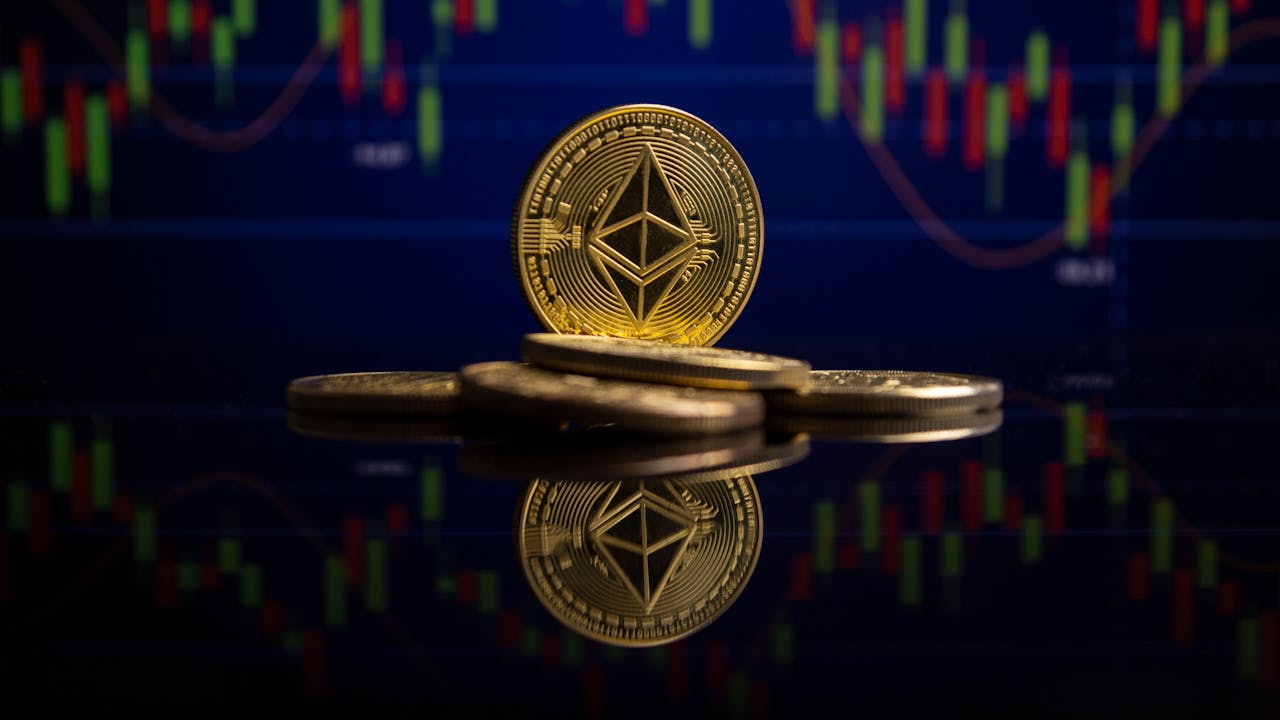Crypto
Ethereum Transactions at Five-Month Low While Layer 2 Solutions Are on the Rise
Ethereum transactions have dropped to five-month lows, with daily transactions falling from over 1.5 million to 1.1 million. High transaction fees have driven users to Layer 2 solutions like Arbitrum and Optimism, which offer faster and cheaper transactions. This shift highlights the success of Layer 2 solutions in enhancing Ethereum’s scalability and efficiency.

Ethereum is one of the most prominent blockchain platforms in the world. But although Ethereum was known for its high number of transactions in the past, a recent analysis shows that the number of transactions has reached a five-month low.
At the same time, so-called Layer 2 solutions are experiencing a rapid increase in popularity. What does this mean for the future of Ethereum and how are the markets reacting to it? We take a close look at the current developments and their possible effects.
Why are Ethereum transactions at five-month low
Recent data shows that the number of transactions performed on Ethereum has dropped to levels last seen five months ago. In September 2023, Ethereum was only recording about 1.1 million transactions per day – a significant drop compared to the highs of over 1.5 million transactions per day reached in the middle of the year. A striking trend that could have various reasons.
A major factor contributing to this decline is the high transaction fees within the Ethereum network. In recent months, more and more users have switched to so-called Layer 2 scaling solutions that enable faster and cheaper transactions. Such solutions, such as Arbitrum or Optimism, relieve the load on the main network while offering higher capacity and more favorable terms of use.
These Layer 2 solutions significantly accelerate transaction speeds and significantly reduce costs. As a result, many users who previously operated directly on the Ethereum network are now switching to Layer 2 solutions.
Vitalik Buterin, co-founder of Ethereum, summed up the situation aptly: “Layer 2 solutions are a critical step in advancing the scalability and efficiency of blockchain technology as a whole.”
Conclusion: What does this mean for the future of Ethereum?
Current developments raise the question: what role will Ethereum play within the blockchain ecosystem in the future? It is obvious that Ethereum itself will continue to play a central role. However, the importance of Layer 2 solutions will increase and permanently change the way transactions are carried out.
The lower number of transactions on the Ethereum mainnet could be interpreted as a decline in the short term, but it also highlights the success of Layer 2 solutions. These allow the network to process transactions more efficiently and reduce the load on the main network. In the long term, this should further promote the use and adoption of Ethereum.
Experts agree that the more these technologies develop and the more users switch to them, the more stable and scalable the entire ecosystem will become. It remains to be seen how this change will affect Ethereum’s performance and the general market sentiment.
The decline in Ethereum transactions on the main network does not mark a bout of weakness on the platform, but rather signals a success of Layer 2 solutions. These developments are a good example of how innovation and adaptability in the blockchain space are necessary prerequisites for long-term success. The future will show how Ethereum and its Layer 2 solutions continue to work together to ensure a robust and scalable network.
__
(Featured image by Bastian Riccardi via Pexels)
DISCLAIMER: This article was written by a third party contributor and does not reflect the opinion of Born2Invest, its management, staff or its associates. Please review our disclaimer for more information.
This article may include forward-looking statements. These forward-looking statements generally are identified by the words “believe,” “project,” “estimate,” “become,” “plan,” “will,” and similar expressions. These forward-looking statements involve known and unknown risks as well as uncertainties, including those discussed in the following cautionary statements and elsewhere in this article and on this site. Although the Company may believe that its expectations are based on reasonable assumptions, the actual results that the Company may achieve may differ materially from any forward-looking statements, which reflect the opinions of the management of the Company only as of the date hereof. Additionally, please make sure to read these important disclosures.
First published in BLOCK-BUILDERS.DE. A third-party contributor translated and adapted the article from the original. In case of discrepancy, the original will prevail.
Although we made reasonable efforts to provide accurate translations, some parts may be incorrect. Born2Invest assumes no responsibility for errors, omissions or ambiguities in the translations provided on this website. Any person or entity relying on translated content does so at their own risk. Born2Invest is not responsible for losses caused by such reliance on the accuracy or reliability of translated information. If you wish to report an error or inaccuracy in the translation, we encourage you to contact us

-

 Crypto1 week ago
Crypto1 week agoCrypto Markets Slide as Bitcoin Breaks $90K, Year-End Pessimism Grows
-

 Impact Investing5 days ago
Impact Investing5 days agoTreeblock Showcases Sustainability Solutions at ADIPEC Abu Dhabi
-

 Cannabis2 weeks ago
Cannabis2 weeks agoRemexian Wins Legal Battles Amid German Cannabis Licensing Dispute
-

 Impact Investing1 day ago
Impact Investing1 day agoHigh Awareness, Low Adoption: The VSME Challenge for European SMEs






















